PHOTO |
 China
World
Newsmaker
Slides
Weekly Photos
Share Your Photos
Special China
World
Newsmaker
Slides
Weekly Photos
Share Your Photos
Special
|
|
 |
Large Medium Small |
|
 Editor's note: Falling on the first day of the first lunar month, the Spring Festival is the most important festival for the Chinese people and is when all family members get together, just like Christmas in the West. All people living away from home go back, making it the busiest time for transportation systems of about half a month. Here we take a review of how Chinese celebrate the festival in a traditional way.
|
|
Preparations There is a shopping spree before the Spring Festival. Shopkeepers stock up New Year goods and spruce up the malls waiting for frantic customers to crowd in. The most favored items are food and decorations. People also do a thorough cleaning to their houses, which symbolizes a fresh start to the upcoming year. |
|
|
On the Chinese New Year, families in China decorate their front doors with poetic couplets of calligraphy written with fragrant Indian ink to express the feeling of life's renewal and the return of spring. It is said that spring couplets originated from "peach wood charms", which were door gods painted on wood charms during ancient times. During the Five Dynasties (907-960), Emperor Meng Chang inscribed an inspired couplet on a peach slat, beginning a custom which gradually evolved into today's popular custom of pasting-up spring couplets. |
A red packet is simply a red envelope with gift money in it, which symbolizes luck and wealth. Red packets are symbolically handed out to younger generations by their parents, grandparents, relatives and friends, and usually the immediate family gives Hongbao to the children on New Year's Eve. The pretty envelopes make the present seem more amiable and sincere. |
|
New Year's Eve Dinner On New Year's Eve night, Chinese families come together for a celebration dinner. This custom is also called "surrounding the hearth" from the ancient custom in earlier times of eating dinner around the family hearth. Both children and adults eat together and dinner begins only after all of the family members are present at the table. The New Year's Eve dinner is very sumptuous and traditionally includes chicken and fish. |
|
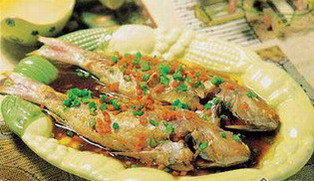 Fish (Chinese:鱼)—Usually not eaten completely, as the Chinese phrase "may there be surpluses every year" sounds like "may there be fish every year."
|
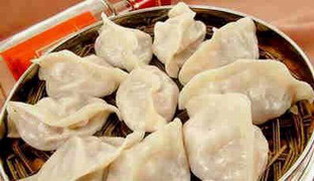 Jiao zi (dumplings) (Chinese:饺子)—Eaten traditionally in northern China because the preparation represents packaging luck inside the dumpling.
|
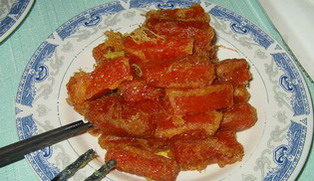 Nian gao (Chinese:年糕)—Most popular in eastern part of China because its pronunciation is a homophone for "a more prosperous year".
|
|
Fireworks and Firecrackers Display
When the Chinese New Year comes, fireworks and strings of colorful lights illuminate the night sky. It is meant to send off the old year and ring in the new.
Fireworks and firecrackers, known as Yanhua and Baozhu in Chinese, were originally made of real bamboo. They were traditionally set off to frighten away ghosts and monsters so that the New Year would be free of them. Legend has it that long ago there was a monster that terrorized people and animals at the end of the year. But this animal was frightened of loud noise, bright lights, and red color. At midnight, on the last day of the old year, these things are used to scare away the monster for another year. You can hear or see fireworks and firecrackers everywhere. Some people will continue to play them occasionally throughout the first half of the first lunar month.
|
|
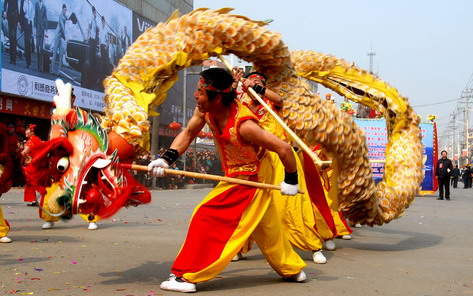 |
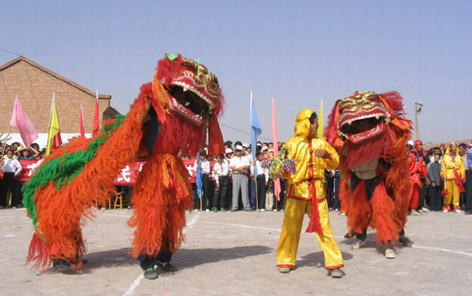 |
|
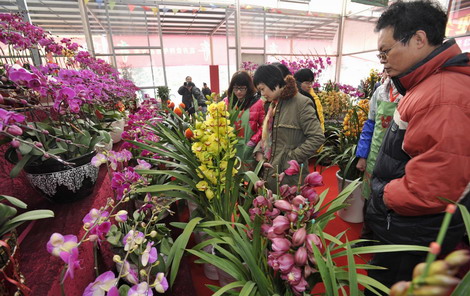 |
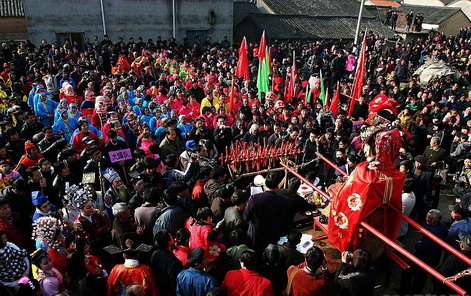 |
|
The day's most important activity is gathering to watch lanterns of various shapes and sizes hang in the streets. Children will make or buy lanterns to stroll with on the streets, extremely excited. "Guessing lantern riddles" is an essential part of the Festival. People write riddles on a piece of paper and post them on the lanterns. If visitors have solutions to the riddles, they can pull the paper out and go to the lantern owners to check their answer. If they are right, they will be rewarded with a little gift. People will typically eat yuanxiao, or rice dumplings, on this day, earning it the name Yuanxiao Festival.Yuanxiao also has another name, tangyuan. Tangyuan is small dumpling balls made of glutinous rice flour filled with rose petals, sesame, bean paste, jujube paste, walnut meat, dried fruit, sugar and oil. |